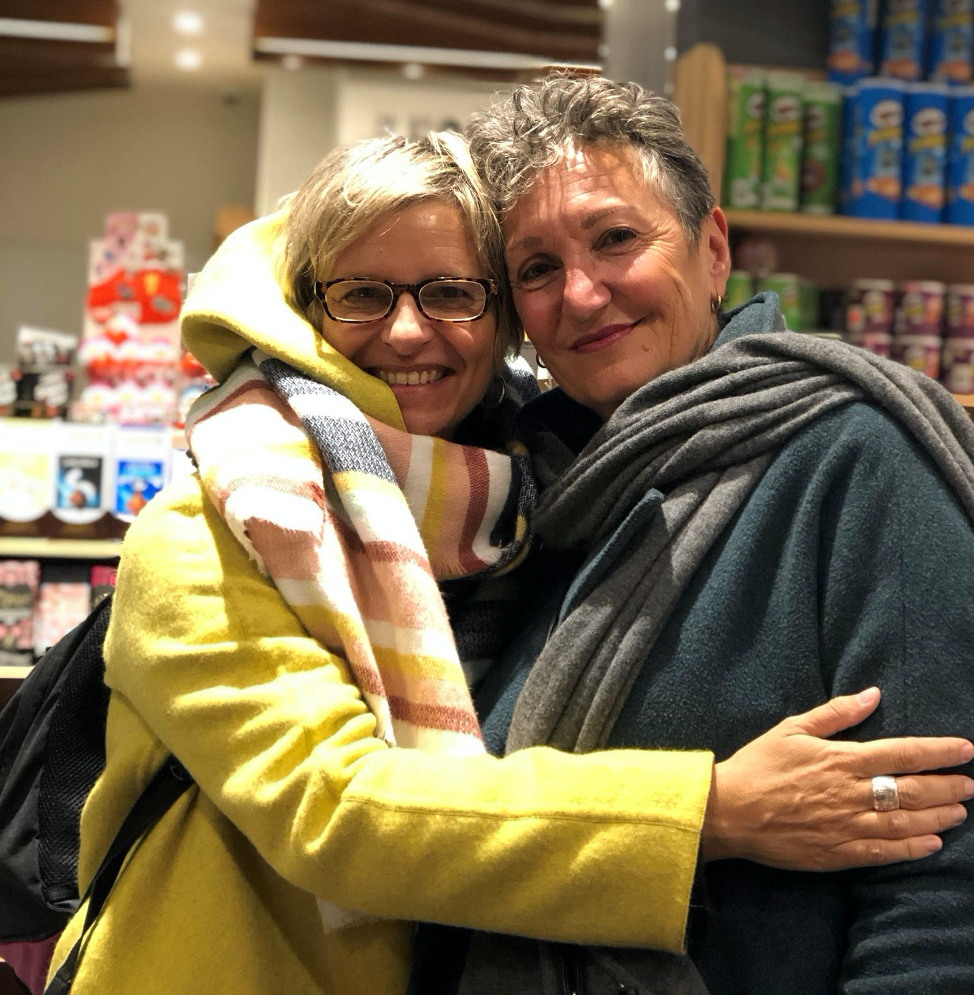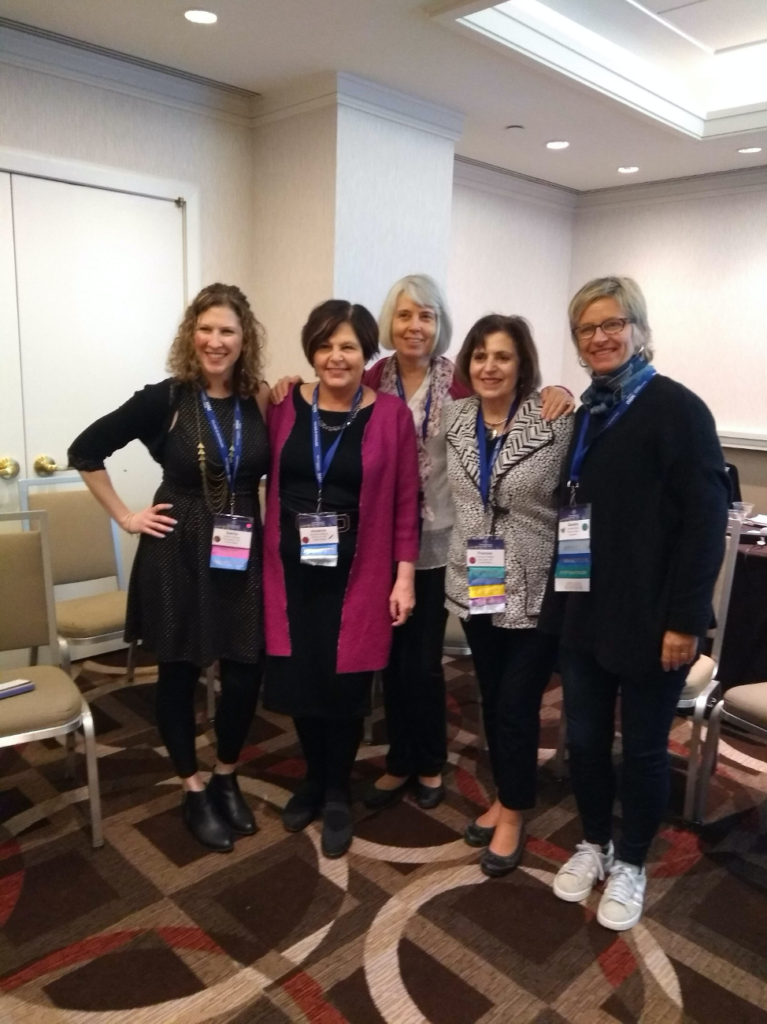Today our volunteer spotlight shines on Sandra Baita. Dr. Baita is a clinical psychologist, child therapist, and EMDR certified therapist and approved consultant. She has been working diligently to provide ISSTD information, news, and trainings in Spanish.
Tell us about yourself.
I live in the City of Buenos Aires, Argentina, where I have been married to Carlos for the last 25 years. We have two beautiful and smart daughters: Mora, who is 21 and studying Architecture, and Maia, who is 16 and finishing school.
I spent the first 15 years of my career working in three different programs in public agencies with the government of the City of Buenos Aires. The main focus of my work was the assessment and treatment of child abuse with children and adolescents. Working in public agencies in developing countries can be really frustrating, due to the lack of resources and opportunities and the unwillingness of our politicians to do something more useful than creating strategies to hold on to power.
Because of this, I resigned and decided to devote all my time to my private practice. This increased my opportunities to do more than seeing clients, and so I spent (and keep spending) part of my time giving training on child abuse, complex trauma, and dissociation – not only for clinicians, but also for judges, prosecutors, social workers, school workers and CPS workers. I also provide consultation and advanced training for EMDR therapists.
Tell us something most of us may not know about you.
When I was a child. I loved writing. I wrote poems and romantic novels, but my parents encouraged me to study something that could be more profitable… but since I don’t know how to become rich, I studied Psychology! I also loved theatre, but no one encouraged me to become an actress, so I thought theatre was just for my amusement as a teenager.
However, I succeeded in combining my child and youth passions with my career. I did use my theatrical qualities when I train, making it possible to have an audience sitting very attentively for two or three consecutive days!
I have also written several pieces in English (book chapters and papers), a chapter in Italian, co-authored a book for judges and prosecutors written in Spanish about child sexual abuse, and authored a book in my own language about developmental trauma and dissociation in children (that was also translated into Italian).
What led you to join the ISSTD?
My very first client was also my first dissociative client: a 7 year-old boy who was referred to me due to his bad behavior at school. After several months into treatment, a clinician – who was my supervisor at one of the public agency program – helped me to understand that I was treating a dissociative child. She had been living in the United States for 10 years and her bookshelf was full of the books I had used to learn how to assess sexual abuse allegations. This is when I found Childhood Antecedents of Multiple Personality written by Rick Kluft. That was a turning point in my newborn career.

I was completely alone and far away from the big hubs of knowledge, so my first steps in the field were more intuitive than academically informed. With the internet era, I first heard about a professional organization entirely devoted to the study of trauma and dissociation. Since I proudly consider myself a nerd, that organization became my Disneyland. I formally became a member of ISSTD in 2003, and traveled for my very first ISSTD Conference in Chicago that same year after being invited by two great and beloved friends I had made in my own city a few months before the conference: Thom Rudegair and the late Susie Farrelly. They both paid for my entire trip. My passport had expired, I didn’t have a visa for US, my second child was only 6 months old and I considered myself a terrible neglectful mom for leaving her just with her dad and caring grandparents, but I finally made it and went to my first ISSTD Conference.
What led you to volunteering with ISSTD?
All the things I have learned since then gave me the opportunity to bring these teachings abroad (probably with the help of my theatrical qualities involved in my training skills), mainly to Spanish speaking countries – Latin America and Spain – but also to the US, Italy (I have spoken Italian since I was 4 years old) and The Netherlands (also probably because when I was a child I pretended to be Dutch and to speak their language… which I actually don’t, unfortunately).
One of the first questions I receive when I train in my own language is Where can I read more? In English you can read whatever you want. In Spanish, not so much.
So, actions were required ASAP.
What are your volunteer roles with ISSTD?
One of the biggest steps ISSTD made to bring quality training to Spanish speaking professionals was the 2012 launching of the first online training on complex trauma and dissociation in adult clients. This was led by Anabel Gonzalez Vasquez and myself.

This was followed by the launching of the first Spanish online training on complex trauma and dissociation in children and adolescents on 2017, which I led. I will be doing the second edition of this course is forthcoming next March.
In order to launch both courses we needed two things: one of them was to adapt the syllabus for colleagues who might never have heard about dissociation before. The other one was to have readings in our own language. So, a lot of translations were required.
You can look for a translator, of course, but you’ll face two problems: they are very expensive, and they don´t have the academic language of the field.
The other option is to just do it yourself.
All of the English readings for both courses were translated and reviewed by a tiny group of Spanish and Latin-American professionals fluent in both languages. This is why we have less readings than the English courses: translations are highly painstaking and time consuming, when we all already have other jobs as well.
When I am asked to write an article or a book chapter in English, or even a short piece for the ISSTD News, I do it by myself and it takes me three or four times more than writing in my own language.
How important is having ISSTD resources available in Spanish?
I love writing, but my Spanish speaking colleagues are in great disadvantage. I gained so much generous knowledge from my English-speaking colleagues, but I think I must return this generosity to those who are in most need. This is how we can keep spreading the word about trauma and dissociation.
If you just want to know why it is so important to have courses and readings in Spanish, let me tell you something: Five years ago, I felt disappointed for not being able to offer more readings to a group of students I had at a University in Argentina. So, I decided to launch a Google Group focused on child trauma. It works as a list-serv and our posts and exchanges are entirely in Spanish. I thought that at least I could offer the consolation of being connected to others working in the field. So, I sent invitations to all my mailing list. More than 100 Spanish-speaking people joined the group immediately. Today, we are over 750 members from around the globe, and counting.
I realized it wasn’t just about my training skills, my theatrical qualities and being able to speak three languages (or pretending to speak a fourth in my childhood imagination). It was mostly about a significant number of people willing to learn more and more. They are committed, and they are passionate. Many of them work in very disadvantaged environments. They all deserve to have quality trainings and readings.

